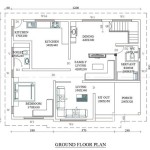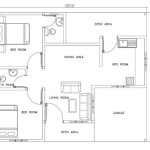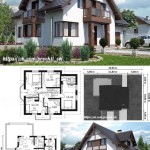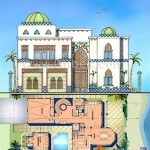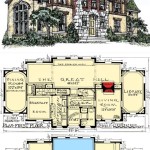Colonial Greek Revival House Plans: A Timeless Architectural Fusion
Colonial Greek Revival house plans represent a significant architectural style that emerged in the United States during the early to mid-19th century. This style is a blend of classical Greek architectural elements with existing Colonial building traditions, resulting in structures that project both grandeur and a sense of established history. The style’s popularity stemmed from a renewed interest in classical antiquity, fueled by the Greek War of Independence and a desire to associate the burgeoning American republic with the democratic ideals of ancient Greece.
Understanding the complexities of Colonial Greek Revival house plans requires examining the historical context, identifying key architectural features, and considering the practical aspects of constructing and maintaining such a dwelling. This article provides a comprehensive overview of this distinctive architectural style, exploring its origins, characteristics, and enduring appeal.
Historical Context and Influences
The rise of the Colonial Greek Revival style was inextricably linked to the intellectual and political climate of the early 19th century. The Greek War of Independence (1821-1829) generated widespread sympathy and admiration for Greek culture and ideals in the United States. This philhellenism, coupled with a growing sense of national identity, contributed to a desire to emulate the architecture of ancient Greece, perceived as the birthplace of democracy. Architects and builders drew inspiration from archaeological discoveries and published treatises on classical architecture, adapting these principles to suit American building materials and construction techniques.
Prior to the Greek Revival, American architecture was largely influenced by Georgian and Federal styles, which emphasized symmetry, refined ornamentation, and brick or wood construction. The Greek Revival represented a shift away from these earlier styles, incorporating bolder, more monumental features derived from classical Greek temples. This transition reflected a broader cultural shift towards a more self-consciously American aesthetic, seeking to establish a distinct identity separate from European traditions.
The availability of new materials also played a crucial role in the development of the Colonial Greek Revival style. The development of sawmills allowed for cheaper and more abundant lumber production, enabling the construction of large, imposing structures. Furthermore, the invention of the cotton gin led to increased agricultural prosperity in the South, fueling the demand for elaborate homes that reflected this newfound wealth. The Greek Revival aesthetic became a symbol of status and refinement, particularly among the planter class.
Key Architectural Features of Colonial Greek Revival Houses
Colonial Greek Revival houses are characterized by a distinct set of architectural features that distinguish them from other styles. These features are often inspired by classical Greek temples, adapted to suit residential construction. Understanding these elements is crucial for recognizing and appreciating the unique character of this architectural style.
One of the most defining features is the imposing facade, often featuring a prominent pediment supported by massive columns. These columns are typically Doric, Ionic, or Corinthian, each representing a different order of classical Greek architecture. Doric columns are the simplest, with plain capitals, while Ionic columns are distinguished by their volutes (scroll-like ornaments), and Corinthian columns are the most ornate, adorned with acanthus leaves.
Symmetry is another key characteristic of Colonial Greek Revival houses. The facade is generally symmetrical, with windows and doors arranged in a balanced manner around a central axis. This symmetry reflects the classical emphasis on order and harmony. Windows are often rectangular and multi-paned, arranged in a regular grid pattern. Doors are typically framed by pilasters (flattened columns) and a decorative entablature (a horizontal band above the door). Sidelights and transoms, often featuring intricate glasswork, are also common features.
The roof is typically low-pitched and gable-ended, often concealed behind a wide entablature and cornice. The cornice, a decorative molding that runs along the top of the wall, is often embellished with dentils (small, tooth-like projections) or other classical motifs. The exterior walls are typically clad in clapboard, brick, or stucco, often painted white or a light color to enhance the classical appearance. Porticos, projecting porches supported by columns, are also a common feature, providing a covered entrance and further emphasizing the grandeur of the facade. The interior floor plans often emphasize a central hallway or parlor, mirroring the symmetrical facade.
The interior elements of Colonial Greek Revival homes also reflected the architectural style. High ceilings, large windows, and symmetrical room arrangements contributed to a sense of spaciousness and elegance. Ornamentation, such as plaster moldings, ceiling medallions, and elaborate fireplaces, was common. The use of Greek motifs, such as anthems and acanthus leaves, further reinforced the classical aesthetic. The materials used inside, such as marble, wood, and plaster, were typically chosen for their durability and aesthetic appeal.
Practical Considerations for Colonial Greek Revival House Plans
Constructing or restoring a Colonial Greek Revival house requires careful consideration of several practical factors. These include the availability of materials, the cost of construction, and the ongoing maintenance requirements. While these homes are aesthetically appealing, they also present unique challenges that must be addressed during the planning and construction phases.
The availability of skilled craftsmen is essential for successfully executing Colonial Greek Revival house plans. The intricate details and classical ornamentation require specialized knowledge and expertise. Finding contractors and artisans who are familiar with traditional building techniques is crucial for ensuring the authenticity and quality of the construction. Working with historical preservation experts can also be valuable in ensuring that the design and construction adhere to the principles of the style. Sourcing appropriate materials can also be a challenge. While modern materials can be used in some cases, replicating the look and feel of original materials often requires specialized suppliers and fabrication techniques. For example, finding suitable wood for clapboard or stucco for exterior walls may require research and careful selection.
The cost of constructing or restoring a Colonial Greek Revival house can be significant. The large size, intricate details, and specialized materials all contribute to the overall expense. It is essential to develop a detailed budget that accounts for all aspects of the project, including labor, materials, and permits. Obtaining multiple bids from contractors and suppliers can help to ensure that the project is completed within budget. Restoration projects often involve uncovering and repairing hidden problems, such as structural damage or water damage. These unforeseen issues can add significantly to the overall cost and timeline of the project. Careful planning and preparation are essential for mitigating these risks.
Maintaining a Colonial Greek Revival house requires ongoing attention and care. The exterior walls, roof, and foundation must be regularly inspected and repaired to prevent damage from the elements. The intricate ornamentation, such as cornices and columns, requires periodic cleaning and painting to maintain its appearance. Interior elements, such as plaster moldings and fireplaces, also require regular maintenance. Moisture control is particularly important in older homes. Leaks and condensation can lead to mold growth and structural damage. Proper ventilation and drainage are essential for preventing these problems. Regular inspections and prompt repairs can help to minimize the risk of damage and ensure the long-term preservation of the house.
Modern adaptations of Colonial Greek Revival house plans often incorporate energy-efficient features and modern amenities. These adaptations may include improved insulation, energy-efficient windows and doors, and updated heating and cooling systems. While these features can enhance the comfort and functionality of the house, it is important to integrate them in a way that respects the architectural integrity of the original design. Carefully selecting materials and finishes that are consistent with the style can help to maintain the historical character of the house. Modern kitchens and bathrooms can be designed to complement the classical aesthetic through the use of appropriate cabinetry, fixtures, and finishes.

House Plan 68466 Greek Revival Style With 2095 Sq Ft 3 Bed 2

House Plan 98264 Greek Revival Style With 8210 Sq Ft 6 Bed

Plan 68466 Greek Revival Style With 3 Bed 2 Bath Car Garage

House Plan 98264 Greek Revival Style With 8210 Sq Ft 6 Bed

Greek Revival Style With 4 Bed Bath House Plans Sims

House Plan 98256 Greek Revival Style With 9581 Sq Ft 5 Bed 6

Plan 052h 0031 The House

Greek Revival House Plans For A Colonial Style 4 Bedroom

House Plan 68441 Greek Revival Style With 2935 Sq Ft 4 Bed 3

Plan 68441 Greek Revival Style With 4 Bed Bath 2 Car Garage


